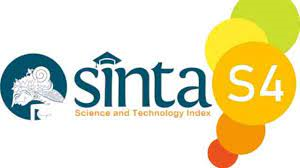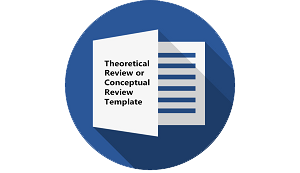Codeswitching among Trilingual Maghreb International Students: Maghreb-Arabic, French, English
DOI:
https://doi.org/10.30957/ijoltl.v9i1.772Keywords:
codeswitching, trilingualism, quantitative approach, Maghreb-Arabic, multilingual communicationAbstract
This article reports on a study of the codeswitches produced by three Maghreb Arabic-French-English adult speakers in their informal conversation. The corpus of the data consists of natural data collected by means of audio-recording. The researcher undertook a quantitative analysis of the participants’ codeswitches to examine the frequency, patterns and linguistic combinations of these codeswitches. The findings revealed that participants engaged in multilingual communication, with a preference for Maghreb Arabic, though they demonstrated proficiency in French and English. While CS occurred at varying rates among participants, the study identified diverse and complex CS patterns, including both intrasentential and intersentential switches. Notably, participants frequently alternated languages within their turns, with the majority of switches occurring between Maghreb Arabic and French, as well as Maghreb Arabic and English. However, about 12.7% of intrasentential switches involved all three languages. This study offers trilingual data that researchers can use for comparative analyses and reference in their own investigations.
Downloads
References
Allgäuer-Hackl, E., & Jessner, U. (2019). Cross-linguistic interaction and multilingual awareness. In S. Montanari & S. Quay (Eds.), Multidisciplinary perspectives on multilingualism: The fundamentals: Vol. 19. Language contact and bilingualism (pp. 325-351). DOI: https://doi.org/10.1515/9781501507984-015
Aronin, L. (2019). Lecture 1: What is multilingualism?. In D. Singleton & L. Aronin (Eds.), Twelve lectures on multilingualism (pp. 3-34). Multilingual Matters. https://doi.org/10.21832/9781788922074-003 DOI: https://doi.org/10.21832/9781788922074-003
Aronin, L., & Jessner, U. (2015). Understanding current multilingualism: What can the butterfly tell us?. In C. Kramsch & U. Jessner (Eds.), The multilingual challenge (pp. 271-291). De Gruyter Mouton. https://doi.org/10.1515/9781614512165-013 DOI: https://doi.org/10.1515/9781614512165-013
Backus, A. (1992). Patterns of language mixing: A study in Turkish-Dutch bilingualism. Otto Harrassowitz Verlag.
Bokamba, E. G. (1988). Code-mixing, language variation, and linguistic theory: Evidence from Bantu languages. Lingua, 76, 21-62. https://doi.org/10.1016/0024-3841(88)90017-4 DOI: https://doi.org/10.1016/0024-3841(88)90017-4
Clyne, M. (1998). Multilingualism. In F. Coulmas (Ed.), The handbook of sociolinguistics (pp. 217-237). Blackwell. https://doi.org/10.1111/b.9780631211938.1998.00020.x DOI: https://doi.org/10.1111/b.9780631211938.1998.00014.x
Gafaranga, J., & Torras i Calvo, M. (2001). Language versus medium in the study of bilingual conversation. International Journal of Bilingualism, 5, 195-219. https://doi.org/10.1177/13670069010050020401 DOI: https://doi.org/10.1177/13670069010050020401
Haryanto, H. (2020). Enhancing English Learning Achievement through Problem Based Learning: An Action Research at SMAN 1 Jepara. IJOTL-TL: Indonesian Journal of Language Teaching and Linguistics, 5(2), 81-94. https://doi.org/10.30957/ijoltl.v5i2.620
Haugen, E. (1956). Bilingualism in the Americas: A bibliography and research guide. University of Alabama Press.
Higby, E., Kim, J., & Obler, L. (2013). Multilingualism and the brain. Annual Review of Applied Linguistics, 33, 68-101. https://doi.org/10.1017/S0267190513000081 DOI: https://doi.org/10.1017/S0267190513000081
Hoffman, C. (2001a). The status of trilingualism in bilingualism studies. In J. Cenoz, B. Hufeisen & U. Jessner (Eds.), Looking beyond second language acquisition. Studies in tri- and multilingualism (pp. 13-24). Stauffenburg Verlag.
Hoffmann, C. (2001b). Towards a description of trilingual competence. International Journal of Bilingualism, 5(1), 1-17. https://doi.org/10.1177/13670069010050010101 DOI: https://doi.org/10.1177/13670069010050010101
Hoffmann, C., & Stavans, A. (2007). The evolution of trilingual codeswitching from infancy to school age: The shaping of trilingual competence through dynamic language dominance. International Journal of Bilingualism, 11(1), 55-72. DOI: https://doi.org/10.1177/13670069070110010401
McClure, E. F. (1977). Aspects of code-switching in the discourse of bilingual Mexican-American children (No. 044). University of Illinois. https://www.ideals.illinois.edu/items/17983
Milroy, L., & Muysken, P. (1995). Introduction: Code-switching and bilingualism research. In L. Milroy & P. Muysken (Eds.), One speaker, two languages: Cross-disciplinary perspectives on code-switching (pp. 1-14). Cambridge University Press. https://doi.org/10.1017/CBO9780511620867 DOI: https://doi.org/10.1017/CBO9780511620867.001
Muysken, P. (2000). Bilingual speech: A typology of code-mixing. Cambridge University Press.
Nilep, C. (2006). “Code switching†in sociocultural linguistics. Colorado Research in Linguistics, 19(1), 1-22. https://doi.org/10.25810/hnq4-jv62
Quay, S., & Montanari, S. (2019). Bilingualism and multilingualism. In A. De Houwer & L. Ortega (Eds.), The Cambridge handbook of bilingualism (pp. 544-560). Cambridge University Press. DOI: https://doi.org/10.1017/9781316831922.028
Romaine, S. (1995). Bilingualism (2nd ed.). Blackwell.
Stavans, A., & Hoffmann, C. (2015). Multilingualism. Cambridge University Press. DOI: https://doi.org/10.1017/CBO9781316144534
Downloads
Published
How to Cite
Issue
Section
License
Authors who publish with this journal agree to the following terms:
- Authors retain copyright and grant the journal right of first publication with the work simultaneously licensed under a Creative Commons Attribution-ShareAlike 4.0 International License that allows others to share the work with an acknowledgement of the work's authorship and initial publication in this journal.
- Authors are able to enter into separate, additional contractual arrangements for the non-exclusive distribution of the journal's published version of the work (e.g., post it to an institutional repository or publish it in a book), with an acknowledgement of its initial publication in this journal.
- Authors are permitted and encouraged to post their work online (e.g., in institutional repositories or on their website) prior to and during the submission process, as it can lead to productive exchanges, as well as earlier and greater citation of published work (See The Effect of Open Access).












